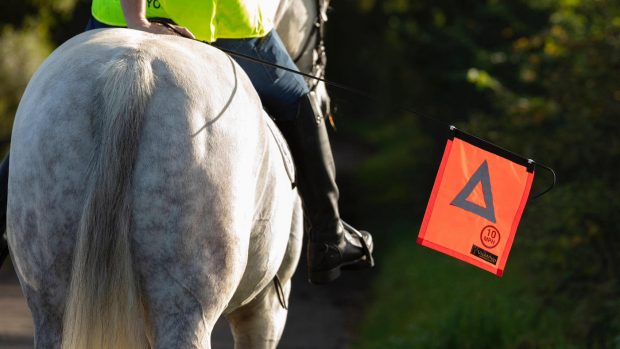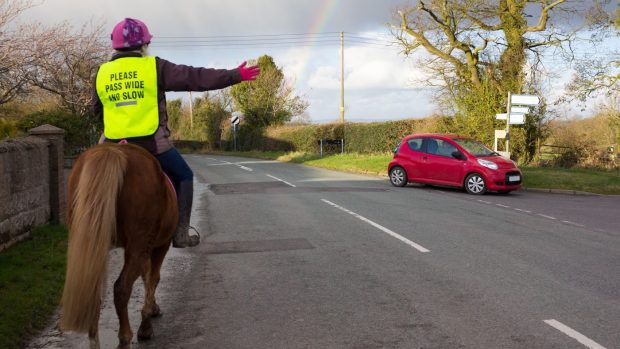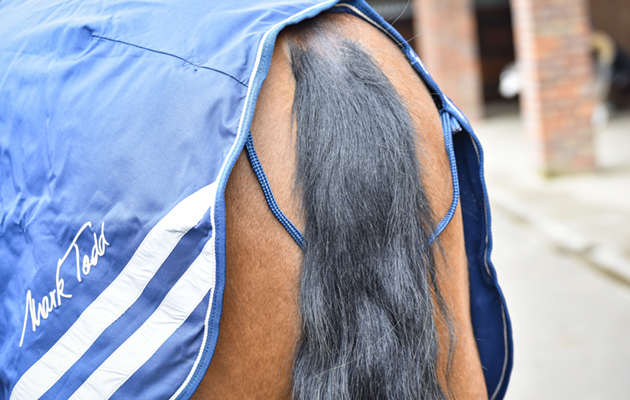More than 250 miles of “quiet lanes” have been established in Suffolk, for the benefit of riders, cyclists and walkers.
Thanks to Suffolk County Council funding, and work from country, district and parish councils, as well as an army of volunteers, more than 350 roads in the county have been designated as quiet lanes. This is a national initiative that means although drivers are still allowed to use each road, signs “clearly showing the hierarchy of right of way” alert them to the fact they are likely to see vulnerable road users.
The law states that the speed of vehicles using such routes must be low enough to allow activities such as riding, cycling and walking to be enjoyed safely by people of all ages and abilities.
Parish councils play a major role in identifying suitable routes; they must apply for the designation and obtain the signs. Other counties are also establishing quiet lanes but in Suffolk it has been particularly successful.
Councillor Alexander Nicoll, Suffolk County Council deputy cabinet member for Transport Strategy, said: “This is a wonderful sustainable initiative aimed at opening up more of our countryside for leisure and recreation activities and active travel.
“The lockdowns over the past two years have shown the value of these areas that exist on many of our doorsteps, both for our physical and mental health. Now they have been officially designated, we hope it will encourage more residents to make use of the countryside around them and explore other ways of travelling other than in the car.”
Quiet Lanes Suffolk was formed from a small group of volunteers who were interested in the scheme but realised the initial funding, in 2014, had run out, and the project had stalled owing to the cost.
The group worked for a year, developing a community-led model and recruiting more volunteers to carry out much of the legwork, which would cut the cost. They presented the model to the East Suffolk Coastal District Greenprint Forum and gained “overwhelming support for the proposal as part of their active travel goal”, and some £40,000 funding.
In 2020, council officers made a successful application to the Suffolk 2020 Fund, a one-year fund of £3m to be used for Suffolk County Council’s policy priorities.
“Quiet lanes would encourage and enhance active and sustainable travel, as well as contribute to the county’s drive to become carbon neutral by 2030, and so it fitted the criteria perfectly,” a council spokesman said.
After trials and contacting parish councils across the county, the volunteers supported the applications, creating online resources and a live digital map.
Now, more than 400km of the routes exist, many connecting with each other, or with bridleways.
“Anecdotally, people have said they feel safer using the quiet lanes, and more people are spending time using them for recreational purposes,” the spokesman said.
Guidance on applying for quiet lanes is available online.
You might also be interested in:

Equestrians and cyclists ARE equal in Highway Code hierarchy, Government confirms

‘Be Nice, say Hi’ campaign urges cyclists to pass horses safely
The aim of the joint initiative is to improve safety for both riders and cyclists

Subscribe to Horse & Hound this spring for great savings
Horse & Hound magazine, out every Thursday, is packed with all the latest news and reports, as well as interviews, specials, nostalgia, vet and training advice. Find how you can enjoy the magazine delivered to your door every week, plus options to upgrade your subscription to access our online service that brings you breaking news and reports as well as other benefits.





